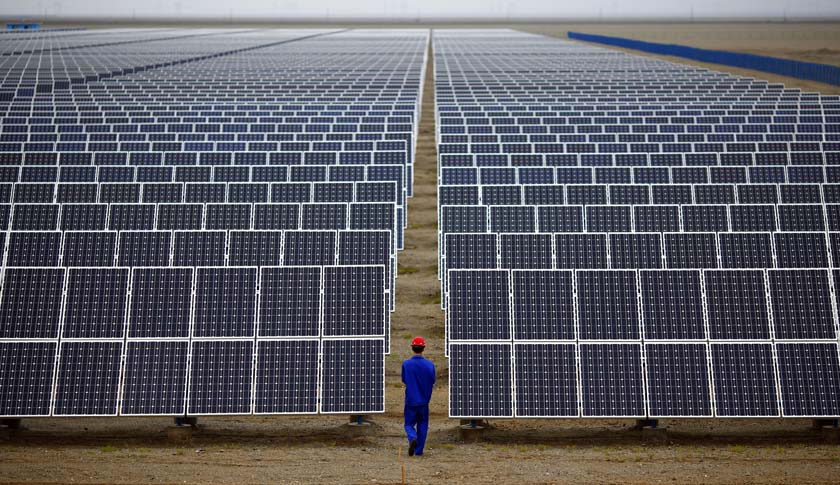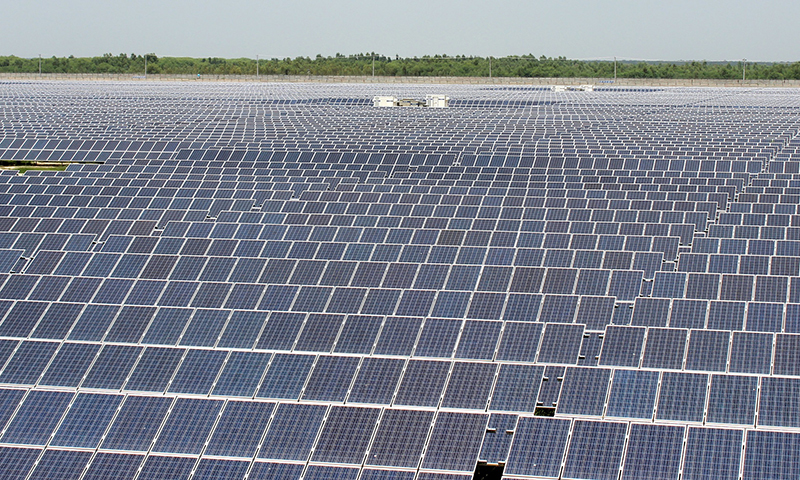An Essential Guide To Buying A Solar Panel – 5 Hints And Tips
As solar energy becomes a popular choice for homeowners not only across the United States but indeed across the world more and more people are beginning to realize that the technology has much to offer.
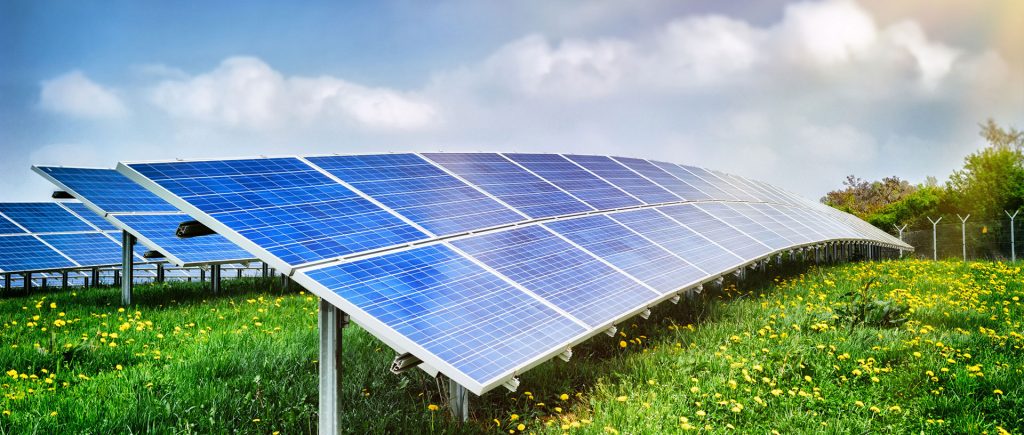
Homeowners are installing solar panels in record numbers due to many different factors. For some it is the fact that they remove themselves form the standard energy grid and can therefore weather the storms brought about by failures of the grid. For others it is the mere fact that they are independent of the normal electricity providers and do not have to be held hostage by increasing costs. For others the idea of using sustainable energy generating technology is tremendously attractive.
Whatever the reasons each homeowner needs to take a variety of factors into account prior to handing over their well earned cash for the purchase of solar technology.
here are 5 hints and tips which will make that purchase decision easier – and ensure that the homeowner gets the most out of his or her solar panel purchase.
1. The Roof.
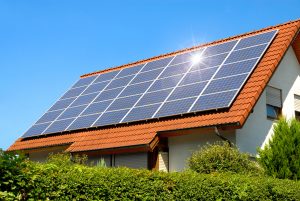
One of the most amazing things about modern solar panels is just how tough they are. Most can last about three decades. However some roofs – such as those coated in asphalt only last around 20 years. It is imperative that the homeowner ensure that the roof is in perfect condition before having the panels installed. It can be extremely costly to remove and then reinstall solar panels if repair work needs to be done to the roof.
2. Efficiency.
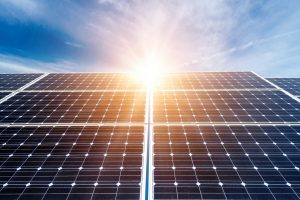 Some areas of the United States for instance will be more suitable for the installation of solar panels – for instance in the Southwest or South of the country. A homeowner who is not in these areas might have to install more panels in order to get the same output. This obviously has implications as far as cost is concerned. Consult a specialist technician or installer to get a expert opinion.
Some areas of the United States for instance will be more suitable for the installation of solar panels – for instance in the Southwest or South of the country. A homeowner who is not in these areas might have to install more panels in order to get the same output. This obviously has implications as far as cost is concerned. Consult a specialist technician or installer to get a expert opinion.
3. Location of Panels.
 Although it is more common to mount solar panels on the roof of the home there are ground mounted options. This might be a consideration if the house is North facing – which would limit the amount of solar energy which can be generated. However, ground level installations can be pricey. To optimize output the panels can also be fitted with mechanisms that allow them to track the sun. This option can add significantly to the expense.
Although it is more common to mount solar panels on the roof of the home there are ground mounted options. This might be a consideration if the house is North facing – which would limit the amount of solar energy which can be generated. However, ground level installations can be pricey. To optimize output the panels can also be fitted with mechanisms that allow them to track the sun. This option can add significantly to the expense.
4. Type of Panels.
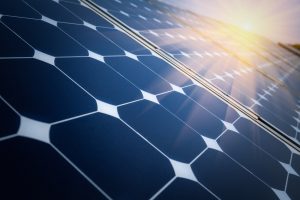 There are a number of different types of panels that are today available on the market. Each of the different types vary in the amount of energy that they can generate. A more efficient panel will mean that the homeowner will be able to recoup his or her investment faster than might be the case with lower efficiency models. The higher efficiency models will also cut down on the number of panels that have to be installed. Once again the advice of a qualified installer can be invaluable in making the decision as to which panel is most suitable.
There are a number of different types of panels that are today available on the market. Each of the different types vary in the amount of energy that they can generate. A more efficient panel will mean that the homeowner will be able to recoup his or her investment faster than might be the case with lower efficiency models. The higher efficiency models will also cut down on the number of panels that have to be installed. Once again the advice of a qualified installer can be invaluable in making the decision as to which panel is most suitable.
5. Finance.
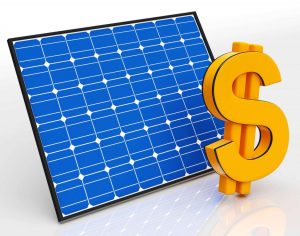 Installing solar paneling can be pricey. For those who lack the money to pay a lump sum up front there are some solar installation companies that will offer finance – and the rising popularity of installations means that even some traditional financial institutions are offering solar loans. There is also the option of leasing the solar panels from the solar company.
Installing solar paneling can be pricey. For those who lack the money to pay a lump sum up front there are some solar installation companies that will offer finance – and the rising popularity of installations means that even some traditional financial institutions are offering solar loans. There is also the option of leasing the solar panels from the solar company.
The increasing use of solar energy for homes is a trend that shows no sign of slowing and it makes sense from a whole variety of perspectives, including financial and as a way to contribute to the elimination of the use of fossil fuels and the greening of the planet.
India’s Kamuthi Solar Power Plant Smashes Records
Increasing interest in solar energy across the globe has recently seen the completion of some of the largest solar energy parks and farms ever designed. For many countries the driving force behind the establishment of these solar energy facilities has been an effort to cut down on the use of highly polluting fossil fuels such as coal used in power stations. For countries like China and India the use of these fuels has caused enormous environmental damage and increasingly dire situation as far as air quality is concerned.
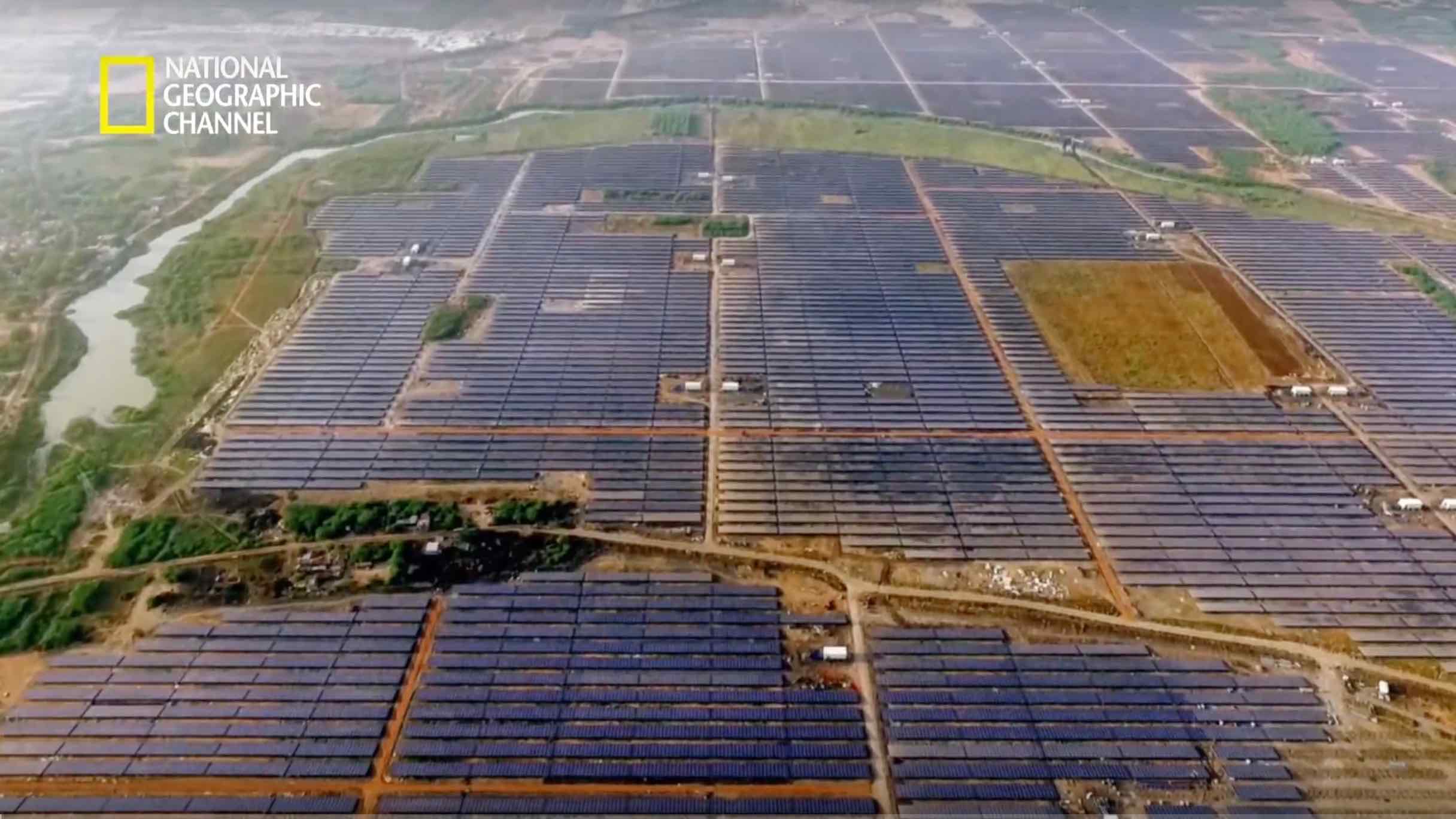
One of these mega projects that has recently been completed is the Kamuthi Solar Power Plant in India.
The scale of the project is breathtaking.
The plant which is in the state of Tamil Nadu covers an area of nearly 4 square miles. The output of the plant is also in keeping with its sheer size – it produces enough power to support 150,000 American type homes – 648 megawatts in total. The project produces 100 megawatts more than the Topaz Solar Farm in California which for many years held top honors as the largest in the world.
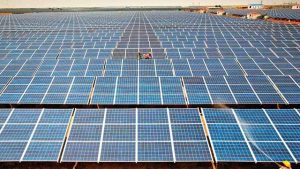 Everything about the project staggers the imagination. The cost alone was $679 million. The specifications of the equipment that is sued to keep the project producing energy is larger than life size. It required the sinking of 380,000 foundations and boasts a staggering two and a half million solar panels. The energy produced is harnessed by nearly 600 inverters and 154 transformers.
Everything about the project staggers the imagination. The cost alone was $679 million. The specifications of the equipment that is sued to keep the project producing energy is larger than life size. It required the sinking of 380,000 foundations and boasts a staggering two and a half million solar panels. The energy produced is harnessed by nearly 600 inverters and 154 transformers.
It’s not only the sheer scale of the project that is fascinating. Some of the technology being employed to keep it operational reads like something out of a science fiction novel. Take for instance the robotic cleaning system that keeps the panels clean and operating at maximum efficiency. this system is completely autonomous – and is also powered by solar energy.
The speed at which the plant was completed is also a source of wonder. The Topaz facility in California took two full years to complete. Although the Kamuthi plant is larger it was completed in a record 8 months. The Topaz plant also cost around $2.5 billion to bring online – Kamuthi with its bargain basement price of $679 million seems a bargain in comparison.
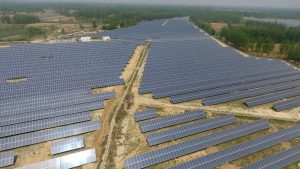
India is completely committed to increasing its use of renewable energy and the government is currently in the process of raising around $1 trillion to ensure that the country reduces its reliance on fossil fuels which is currently wreaking havoc with the environment.
Andhra Pradesh will be the focal point for further solar parks that will be even larger than the Kamuthi plant. The planning process for these additional plants is already well advanced and will see India maintaining its current position as one of the leading countries in the world when it comes to harnessing the power of solar energy.
India is fast approaching third spot behind China and the United Sates of America as leaders in the production of solar power.
The urgency of the roll out of further products was brought into sharp focus when analysis of the air quality of New Delhi was analyzed by the U.S. consulate and found to be well above what their analysts classify as ‘hazardous.’ The cost of the air pollution – both in terms of the effect of the quality of life and health of Indian citizens and the loss of productivity is difficult to quantify – but it is having a material impact on the development of the country.
Projects like Kamuthi will see India wean itself from it dependency on coal and remain a leading light in the use of solar.
Ranking Solar Energy By Country – The Top 5
As the world begins to realize that the impact of fossil fuels is having disastrous effects on the environment and leading to accelerating climate change there has been a renewed interest in the energy supplied from renewable sources – and included in this mix is solar energy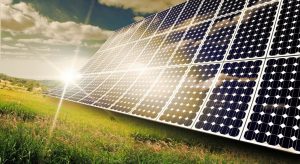
It is not only climate change that is spurring the move towards solar. In countries such as India and China major cities are having to cope with increasing levels of air pollution caused by the use of fossil fuels. This pollution is causing medical conditions such as asthma and other respiratory problems to skyrocket. Not only does this affect the health of individuals, but also has severe effects on productivity and harms the economic growth of countries.
So for many nations the need to install solar power generation is one that is coming more and more urgent.
Taking this into account which are the top 5 nations where solar power is being installed at a breakneck pace?
The first one the list is China. For many years China has been at the forefront of developing solar technology – but it was not until recently that it began developing solar farms and parks to power its own growing economy.
The country installed solar infrastructure supplying 78 GW of electricity in 2016 and rapidly followed up with 35 GW in 2017 – with much more in the pipeline. Astonishingly the is more than the entire world had up and running in 2014.
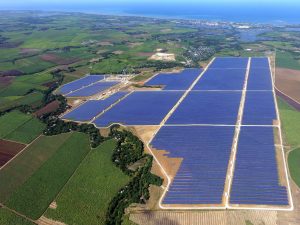 Japan has been slow in coming to the solar power party but has steadily increased its capacity and now is in second spot behind China. Japan now generates 42.8 GW of power from solar installations. The nature of Japan’s installations is different from other countries due to space restrictions and much of the growth has come from installations on home rooftops. However, Japan’s spot at number two might not last – installations have slowed recently and changes in the tariff structure might slow new installations considerably.
Japan has been slow in coming to the solar power party but has steadily increased its capacity and now is in second spot behind China. Japan now generates 42.8 GW of power from solar installations. The nature of Japan’s installations is different from other countries due to space restrictions and much of the growth has come from installations on home rooftops. However, Japan’s spot at number two might not last – installations have slowed recently and changes in the tariff structure might slow new installations considerably.
At number three we find Germany which has long been recognized as one of the pioneers in the installation of solar power generation facilities. By the end of 2016 the country had a generation capacity of around 41.2 GW. But as is the case with Japan installation has slowed and the country may not be one of the top 5 for very long.
At position number 4 is the United States. This country has the potential to get to top spot and maintain its position – and as the world’s largest consumer of energy it has the motivation to take solar to the next level. It also has huge amounts of space that are ideal for the establishment of solar farms. Areas like the Mojave Desert are perfect for the development of enormous arrays of solar panels. The country generates 40.3 GW of electricity at the moment. However there are plans to develop mega projects to up this significantly.
Number five might be surprising – Italy which was generating 19.3 GW at the end of 2016 – but continues to add capacity on a regular basis. The importance of solar in Italy is abundantly clear when one realizes that the country generates 7.3 percent of its energy needs via solar energy installations – more than any other country on this list. The country is relatively small so it is possible that Italy will slowly but surely move to a situation where solar energy dominates its energy mix.
Solar is here to stay and these countries are leading the way towards a brighter – and greener future.
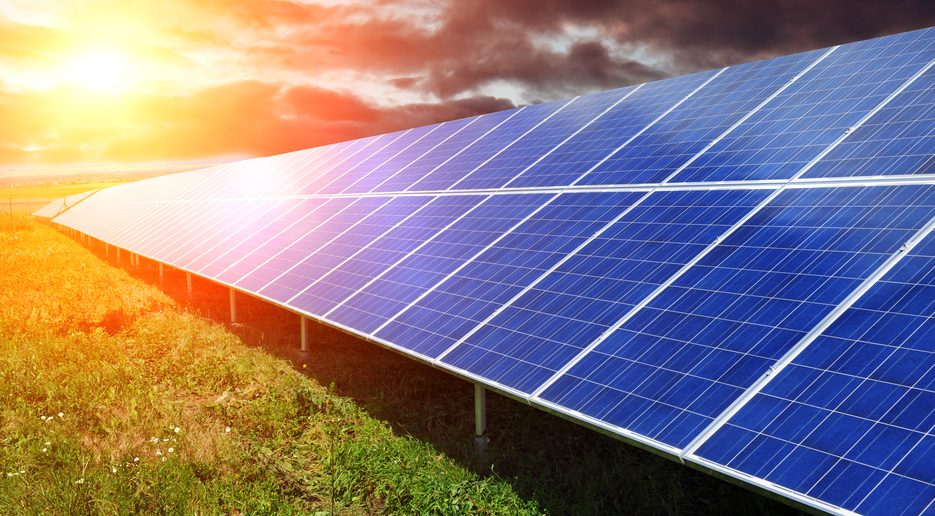
What Are The Top 5 Largest Solar Power Installations In The World?
The world’s two most populous countries – China and India have begun to invest heavily in alternative energy sources in a bid to move away from fossil fuels. There are a number of reasons for this, but perhaps the most important of these reasons are the fact that reliance on fossil fuels such as coal for power plants means using a finite resource. eventually it is going to run out. But perhaps even more pressing for these two countries is the absolute necessity to reduce air pollution levels which are affecting their urban areas to such an extent that it is leading to health problems among their citizens and having a severe impact on productivity.
As an example China is the world’s largest emitter of carbon – much of it from power plants. In fact China emits twice as much CO2 as the United States. China has recognized the problem and has pledged to source 20% of its energy from renewable sources by 2030 – and a large amount of this will come from solar projects.
It’s also been recognized by these countries that the rapid advances in solar power technology means that it is now the cheapest form of power generation on the planet – with costs now coming in at around dollar 0.03 per kilowatt hour.
However, the United States which once led the world as far as solar technology and mega installations has not been left in the dust. It still has some of the largest solar farms in the world.
So what are the top 5 solar installations in terms of size and generating capacity?
1. Topaz Solar Farm.
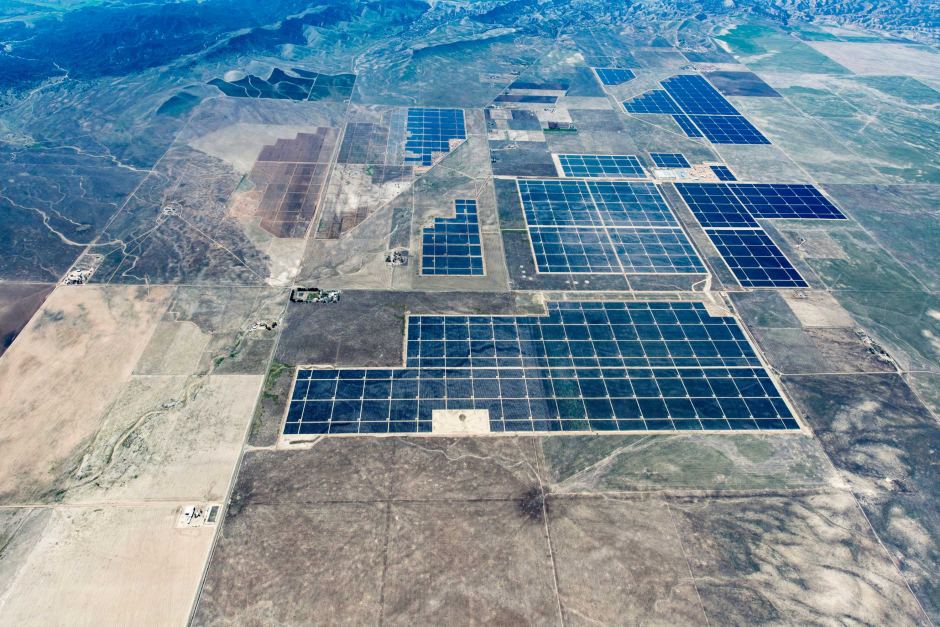
This solar farm in California produces 550 MW worth of power. It was completed in 2014 – built by NASDAQ listed First Solar. First Solar has estimated that the energy produced at Topaz is enough to provide electricity for around 160,000 homes in the California area alone. The project is unusual in that it uses thin film solar panels rather then the silicon based panels that other mega solar installations use.
2. Solar Star.
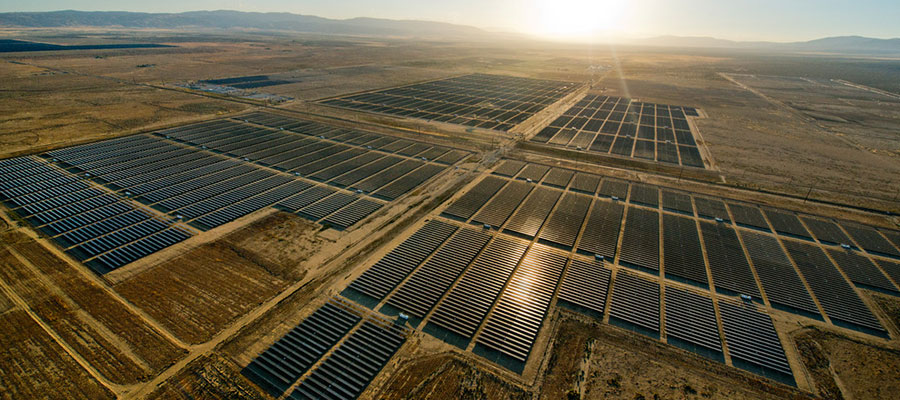
Another very large solar farm developed by SunPower in Rosamond California was completed in 2015. This solar farm produces 579 MW of power. When it was completed it held the rank of number one in terms of generating capacity – it has however now been overtaken by other projects elsewhere in the world. The farm is highly efficient due to the fact that the panels track the movement of the sun maximizing output. According to SunPower the output is enough to power 255,000 homes.
3. Kamuthi.
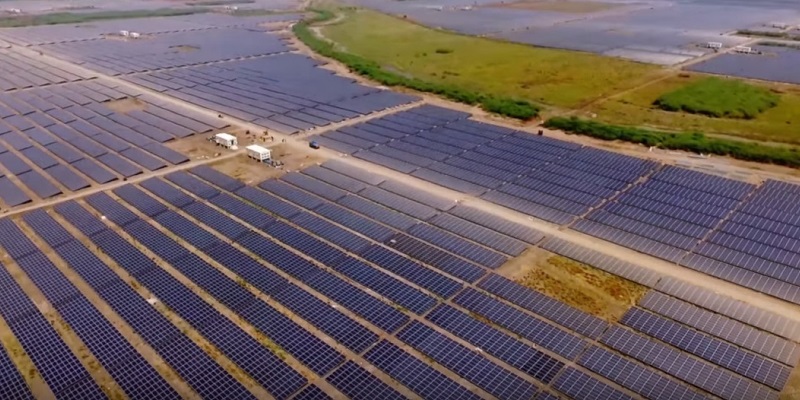
In 2016 the Kamuthi Solar Power Project in India was completed. The sheer scale of this solar farm is staggering. With two and a half million panels covering an area of around 4 square miles it is one of the most impressive in the world. It generates 648 MW. It is only one of a series of new solar installations that India has planned in its attempt to generate 100GW of power from solar by 2022. This would allow the country to provide power to 16.4 million U.S. style homes.
4. Longyangxia Dam.
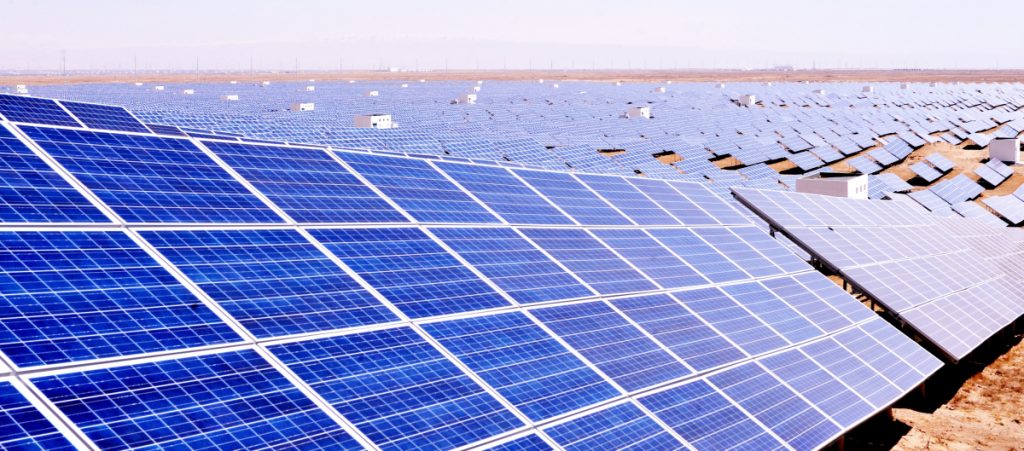
Generating 850 MW’s this solar park in China is another project of staggering scale. With 4 million panels covering ten square miles it held the title of the world’s largest in 2017, but the title soon passed to an Indian project.
5. Kurnool Ultra Mega Solar Park.
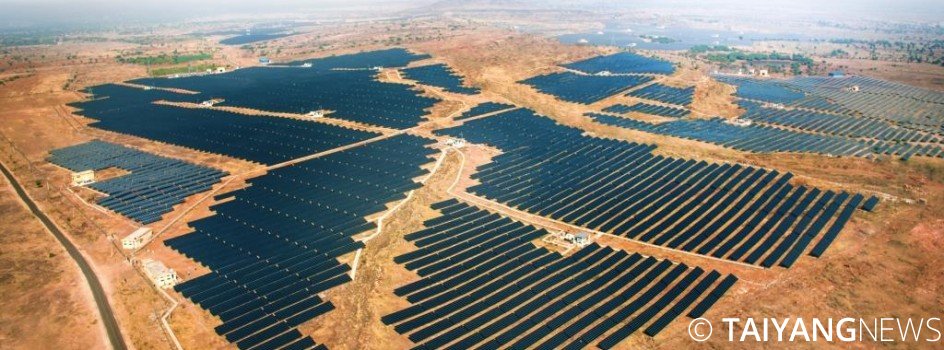
Currently the world’s largest solar installation this project generates 1000 MW. India plans to build several more of projects this size in the coming decade.


